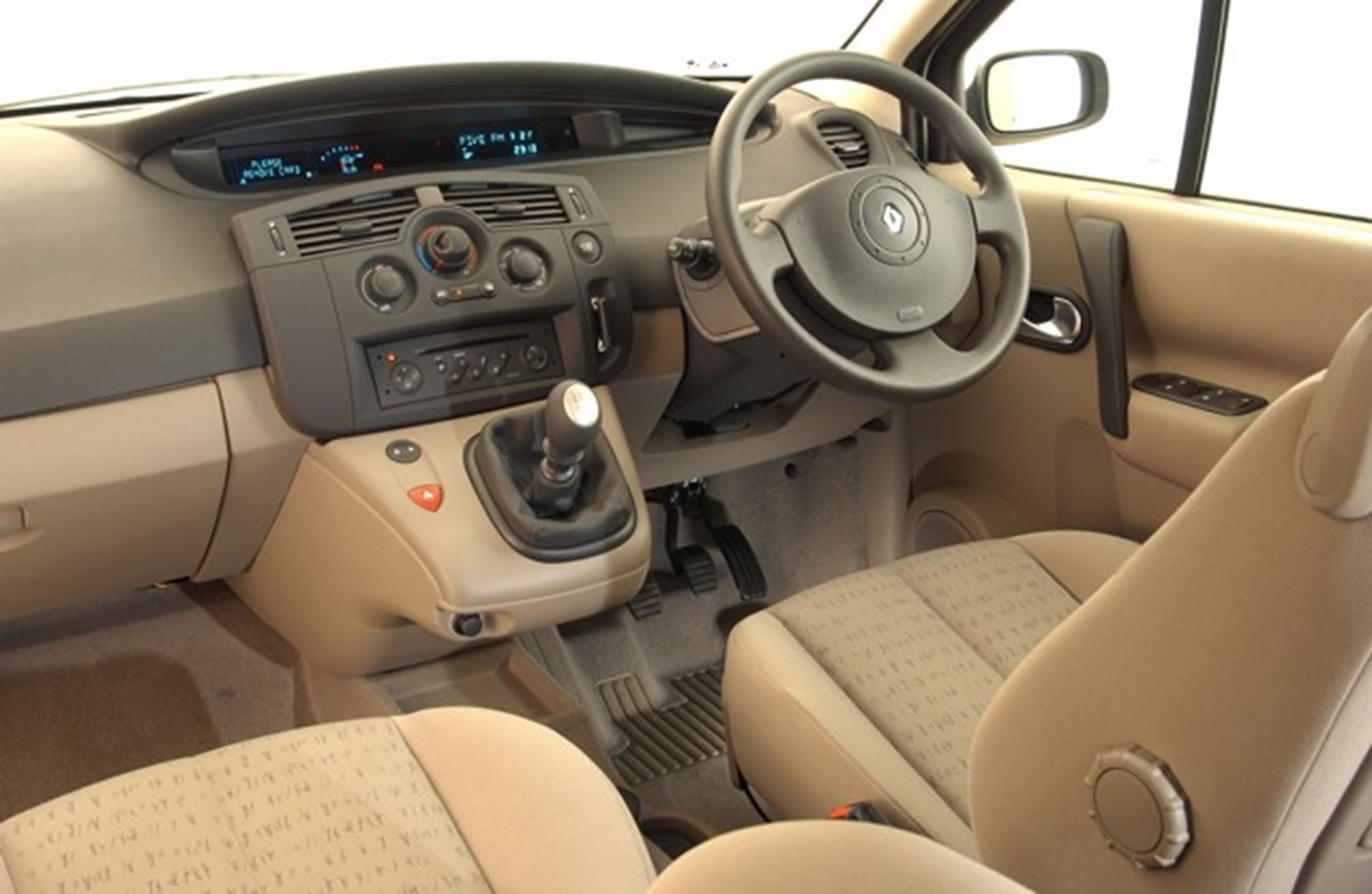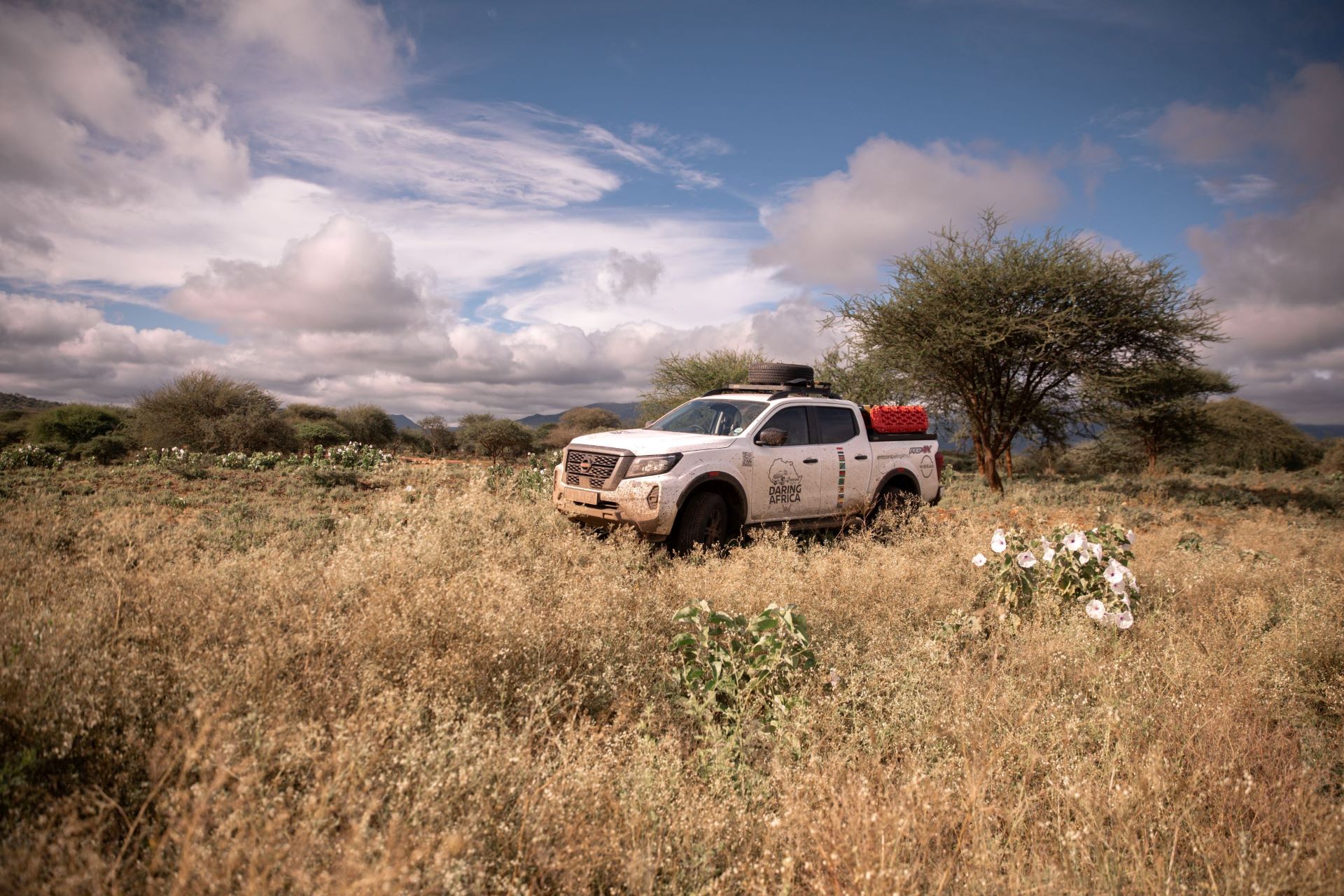Since the first Renault Scenic was launched locally, this Multi-purpose vehicle, or MPV in short, has been a firm favourite for South African motorists looking for an unprecedented driving experience, especially when it comes to safety and comfort.
Scenic II brings to its class a breath of fresh air. The design blends MPV styling with the distinctive rear end treatment that is a characteristic of the Megane range. With its wider track, longer wheelbase and short overhangs, Scenic II shares the same taut lines and foursquare stance as the Megane hatchback, for a modern, expressive and unique styling statement.
The interior boasts a dashboard with a centrally mounted instrument panel, so that information displayed can be shared with all occupants. Trim quality, fit and finish all reflect Renault’s drive for outstanding quality, notably the widespread use of soft-touch plastics on the upper surfaces of the dashboard. In addition, the Touch Design treatment of the controls renders their operation more positive and aesthetically pleasing.
Scenic II is a model of packaging efficiency – it epitomizes Renault’s expertise gained as the pioneer in this vehicle category. With a gain of 26 mm in front headroom thanks to its new horizontal roofline, the Scenic is firmly placed amongst the best in its class with a windscreen area of 1.45 m² is also unequalled in this segment, adding to the light, airy cabin ambience and providing a panoramic view for front seat occupants.
Building on the versatility offered by the original Scenic, the Scenic II features a fascia-mounted gearshift and automatic parking brake (on certain models), improving ergonomics and freeing up floor space. This innovation makes it possible to fit an optional new sliding centre console storage feature (on some models), which can be electrically unlatched and slid front to rear for easy access by all occupants.
A double floor allows the seat slides to be recessed, leaving more foot room for the occupants, while the three rear seats feature headrests that fold away into the top of the seat backrest for enhanced rearward visibility when the rear seats are unoccupied. Aircraft-style flip-out tables are provided on the rear of the front seatbacks.
From Expression level onwards, the front passenger seat can be folded down to form a flat, hard-surfaced table, as is the case for all three rear seats across the range. This has the additional benefit of making it easier to load long objects without removing the seats, although this process too has been simplified. The rear seats can be slid individually forward or back for optimum positioning. When set into their storage position, they lock into place automatically without the need for latching straps. Scenic II is also the only compact MPV with an opening tailgate window.
A versatile, innovative interior storage solution is hallmark of this fantastic model. Every possible area of free space within the cabin has been transformed into stowage space, whether in the front and rear door panels, the front side armrests, the front and centre armrests, and even the front foot wells. In addition to the optional 15 litre sliding centre console, there are four under seat drawers with capacities of 5.5 litres front, 3 litres rear. Two under floor compartments front and rear hold 3.5- and 11 litres respectively.
The air conditioned glove compartment is also the largest in the segment, at 12 litres. A total of 86 litres of interior storage space is available, while luggage space varies in volume from 430 to 480 litres according to the position of the rear seats. Lashing points are provided on the floor of the luggage area and additional stowage space is available beneath the floor in the spare wheel well and in the panels behind the wheel arches. The rear parcel shelf can be positioned at three different levels according to the load requirements.

The Scenic II provides exemplary levels of acoustic and thermal comfort. Both mechanical- and wind noise are subdued, while thermal comfort levels are class leading thanks to the high capacity heating and air conditioning systems.
Occupant comfort is further enhanced through the availability of a unique panoramic glass sunroof with an area of 1.61 m², as well as roller sun blinds in the rear doors.
Depending on equipment level, up to 17 sources of interior lighting are provided. The air conditioning system has a solar radiation sensor in addition to the usual air temperature sensors, for more precise regulation of interior temperature. It also employs an electronically-controlled variable capacity compressor to reduce fuel consumption and emissions.
Driver comfort has always featured high on the Scenic’s agenda, and the Scenic II takes this a stage further, with an even more car-like seating position, short-throw gear lever and control stalks, and a more vertical steering column. Visibility remains superior to that of a normal car thanks to the raised driving position.
Other technical innovations available either as options or standard equipment include the optional bi-xenon headlights first seen on the fourth generation Espace, which dynamically adapt beam height at low speeds and also maintain it automatically regardless of load or braking; the Renault Key Card system for locking and unlocking the vehicle; electrically foldable exterior mirrors; auto-dipping interior rear-view mirror; and a cruise control/speed warning system.
Scenic II utilises the platform of the Megane II. The front suspension layout comprises McPherson struts with a rectangular lower arm, a damped sub frame serving to insulate the vehicle body from road vibration. At the rear, the programmed deflection torsion beam with coil springs incorporates an anti-roll bar. Suspension mounting points are placed ahead of and within the wheel axis, to further enhance the vehicle’s handling precision.

Four wheel disc brakes are standard on the Scenic. Those at the front are ventilated, and measure either 280 or 300 mm dependent on engine capacity, while 270 mm solid discs are fitted at the back. A new servo unit pressurises the system to a maximum of 115 000 kPa, compared to 90 000 kPa of the previous model.
In addition to ABS, Emergency Brake Assist with automatic hazard flasher activation is fitted. Renault’s new generation electronic stability programme (ESP) with CSV under steer control and ASR traction control is available as an option on all models.
Both active- and passive safety levels are of the highest order, Scenic II having achieved a five-star rating in the rigorous NCAP test. The vehicle structure has been designed to absorb as much energy as possible in an impact while maintaining the cabin as a survival cell to protect the occupants from the intrusion of any mechanical components.

In order to achieve the same passive safety standards as the Megane II, the structure has been strengthened in three strategic areas: the pillars, the door mountings and the sills. The fuel tank is housed in a zone protected by the sill section, while the doors themselves employ horizontal anti-intrusion beams.
An optimum balance has been sought between the ability of the body structure to absorb impacts and the restraint systems within the vehicle. Scenic II is equipped with Renault’s third-generation System for Restrain and Protection (SRP), which combines adaptive two-stage airbags with adaptive safety belts, 400daN dual load limiters and twin pretensioners for the front seats. There are also two chest airbags built into the front seats for the front passengers, and two curtain airbags to protect the heads of both front and rear passengers regardless of their height.
Various zones of padding have been installed within the cabin to protect the lower limbs, and as much free space as possible has been left around the pedals. The steering wheel has a deformable magnesium armature, which combines with the collapsible steering column to dissipate impact energy. The pedals also collapse to compensate for any rearward movement of the bulkhead.
The front seat frames are produced from high performance steel for added strength, while the two close contact front head restraints protect the neck in the event of rear impact while offering optimum comfort levels. All three rear seat passengers benefit from three point inertia reel safety belts and integrated headrests. 600 daN thoracic load limiters are fitted to the rear belts, with the outer two having pyrotechnic pretensioners. To counter submarining and the risk of abdominal injury, the belt buckle attachment points have been stiffened and their stalks shortened. The rear seat backrests have been strengthened to prevent the intrusion of luggage from the rear.
Scenic II offers a three-point attachment system for Isofix child seats, either forward- or backward facing. The third point connects the upper part of the seat to a vehicle anchorage point via a strap, to limit fore and aft movement in the event of an impact. The front passenger airbag, side chest airbag and pyrotechnic pretensioner can be disabled via a switch with a dashboard warning light if the child seat is fitted in that position.
Like its Hatchback sibling, Scenic II has been designed from the ground up to offer high durability and reliability, low operating costs and respect for the environment. All models benefit from a three-year/100 000 km warranty and a six-year anti-corrosion warranty. Additional peace of mind is provided by a three-year/60 000 km maintenance plan. For South Africa, service intervals have been set at 15 000 km for petrol models and 10 000 km for diesel models.
The stainless steel exhaust system is made for extended life and service operation times have been reduced by 10 percent on average compared with the previous model, placing Scenic phase 1 among the best in its class in this respect.
Specific attention has also been paid to the reduction of repair costs in the event of an accident. Extruded aluminium cross members front and rear absorb almost all the energy in an impact below 16 km/h. The resultant elimination of welding and painting operations significantly reduces the cost of repairs. Scenic II’s soft nose front bumper was designed to protect the main mechanical components and surrounding body panels in the event of a low-speed impact.
Renault’s Key Card electronically stores a host of information about the vehicle, including the VIN number. Dynamic information such as fuel- and oil levels, mileage, tyre pressures, time to next service and an emissions check is updated each time the car is driven. Renault dealers equipped with the necessary diagnostic equipment can access this information, further enhancing service efficiency.
98 percent of the body panels on Scenic II are made of double-sided galvanized sheet steel, as is the engine sub frame. Wax is applied within box sections, and the aerodynamic panels beneath the body also provide protection for the suspension components against gravel and debris thrown up while the vehicle is in motion.
Multiplexing technology is used in the electrical and electronic circuitry and components of the Scenic II, for security of operation and greater reliability.
Scenic II also benefits from the latest developments in the areas of anti-intrusion and theft protection. The driver’s door lock and ignition are resistant to drilling, while the former incorporates a freely rotating shielded barrel. All lock mechanisms are shrouded and are cable-operated, while the cables themselves have been routed and shielded to make them extremely hard to “hook”. The under bonnet ECU has also been protected.
Renault’s Key Card alarm/immobiliser utilises two-way interrogation and code-hopping technology, while the electric latch that locks the steering column is also coded. The steering column is fitted with a strengthened housing to resist a forcible attack. A deadlocking function, activated by pressing twice on the Key Card, disconnects the interior door handles so they cannot be opened even if entry is gained to the vehicle through a window. The Key Card also offers selective unlocking of just the driver’s door or all doors according to requirements, while all doors lock automatically once the vehicle is in motion.
In addition to the efficiency enhancements wrought by the new range of engines, aerodynamics, friction reduction and weight saving were addressed in great detail during the design of the new Scenic. The underside of the vehicle is shrouded, with a shield beneath the engine and fairings for the rear suspension, all in the interests of reducing aerodynamic drag.
The use of new generation brake callipers has resulted in a 50 percent reduction of calliper drag. The use of electric power steering, multi-thickness steel wheels, a composite rear floor and a variety of aluminium components within the vehicle structure has helped Renault to limit any increase in vehicle weight.
Some 95 percent of Scenic II by weight is also easily recyclable. The method of attachment of certain trim components has been simplified with this in mind, the range of materials used has been reduced, accessibility for extraction of fluids improved and the marking of components extended to items such as the shock absorbers, which are now marked with the type of oil they contain.
12 kg of renewable materials such as cotton are used in the construction Scenic II, as well as 16 kg of recycled plastics.
Finally, Scenic II is at the top of its class in respect of noise emissions. Its drive-by noise level is 71 dB compared to the EU standard of 74 dB, representing a halving of noise intensity.
In summary, Scenic II is a worthy successor to its trend-setting forbearer. It offers a breadth and depth of abilities that establish it once again as the standard by which all others in the compact MPV class must be measured.



